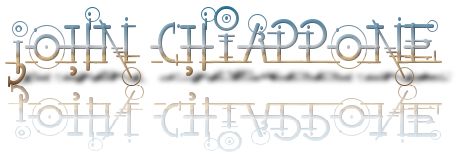Chapter:
INT |
1 |
2 |
3 |
4 |
5
|
6
|
7
|
8 |
9 |
10 |
11 |
12 |
13
C
H
A
P
T
E
R
4
After silence, that which comes nearest to
expressing the inexpressible is music. - Aldous
Huxley
|
|
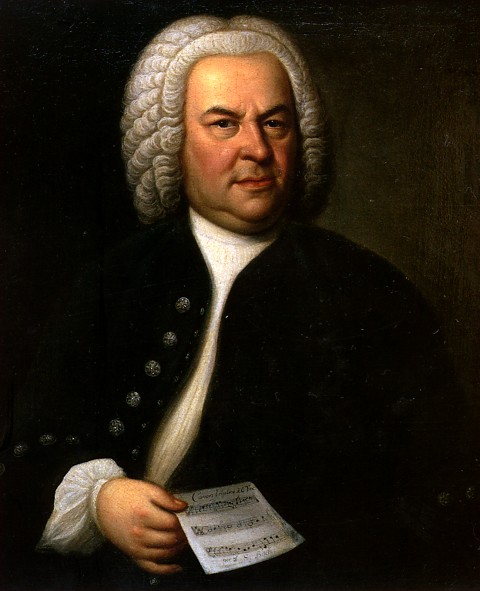
|
Johann
Sebastian Bach
German (1685-1750)
Bach was Musician of the
Baroque era. He was a composer, organist,
harpsichordist, pianist, violist, and
violinist. His
Well-Tempered Clavier consists of preludes
and fugues in all 24 major and minor keys
(1722). His system of tuning (well tempered
tuning) and composing made it possible to
play in all keys - without retuning the
instrument.
Sarabande by Yo-Yo
Ma
Bach Sarabande jazz guitar played by Renato
Rozic |
|
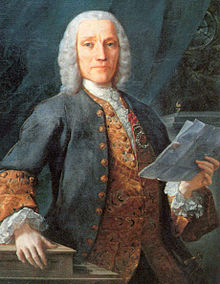 |
|
Giuseppe Domenico Scarlatti
(1685–1757) Italian Baroque / Classical
composer. He wrote 555 keyboard sonatas.
Click the picture to listen.
|
|
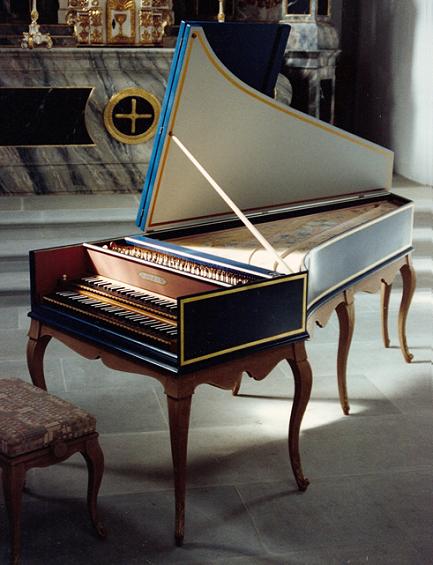 |
|
Harpisichord
Harpsichords produce sound by plucking a
string when a key is pressed. It was widely
used in Renaissance and Baroque era, and
fell out of favor when the piano was
invented. Click the picture to listen.
|
|
|
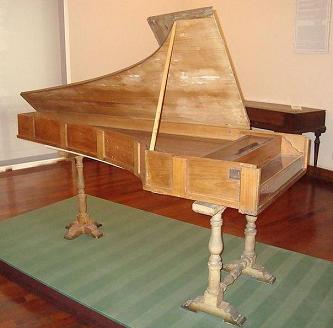 |
|
Bartolomeo
Cristofori di Francesco
Italian (1655-1731)
He was the inventor of
the piano. The instrument was originally
called the pianoforte - or loud soft
instrument.
|
|
|

|
Ludwig
van Beethoven
German (1770-1827)
Beethoven
was the inventor of romantic music. This
music put an emphasis on emotions over
reason. He was completely deaf when he
composed his 9th symphony. Click the
picture, and listen.
|
|
|
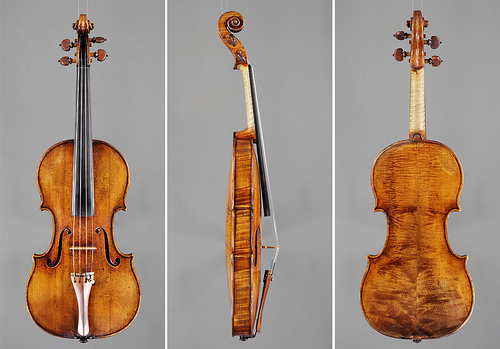
1726 Stradivari played by Niccolò Paganini
|
|
 |
|
Niccolò
Paganini
Italian (1782-1840)
Niccolò Paganini was a
violinist, violist, guitarist, and composer.
He is one of the greatest violinist of all
times. Click the picture, and listen to his
Caprice No. 24 in A minor, Op. 1.
|
|
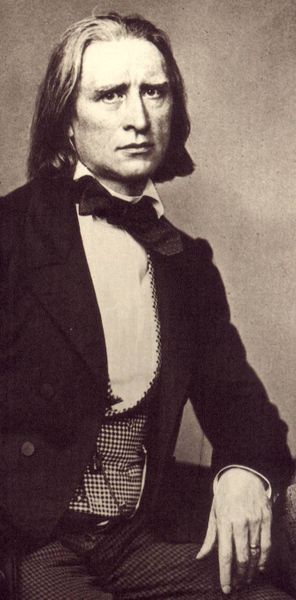 |
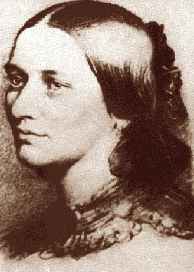
Clara Wieck -
Schumann |
|
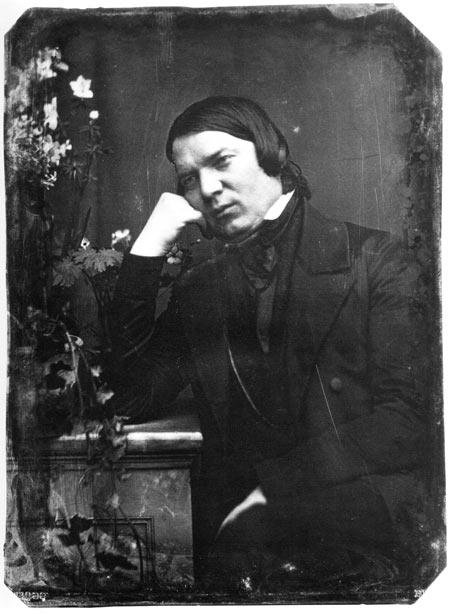 |
|
Robert
Schumann
German
(1810-1856)
Schumann
was a pianist, composer, music critic,
and lawyer. He is one of the greatest
composers of the Romantic era.
He started as a concert pianist, and was
disturbed by his inability to play a piece
by Franz Liszt. His hands didn't have the
reach, so he constructed a device to stretch
his hands. This resulted in an injury that
left him crippled. He turned to composition,
and his wife Clara assisted him in
performing his music. She was one
of the greatest pianists of he time.
|
|
|
Frédéric
Chopin
Polish (1810-1849)
Chopin was one of the
greatest composers of romantic piano music.
Click the picture to listen. |
|
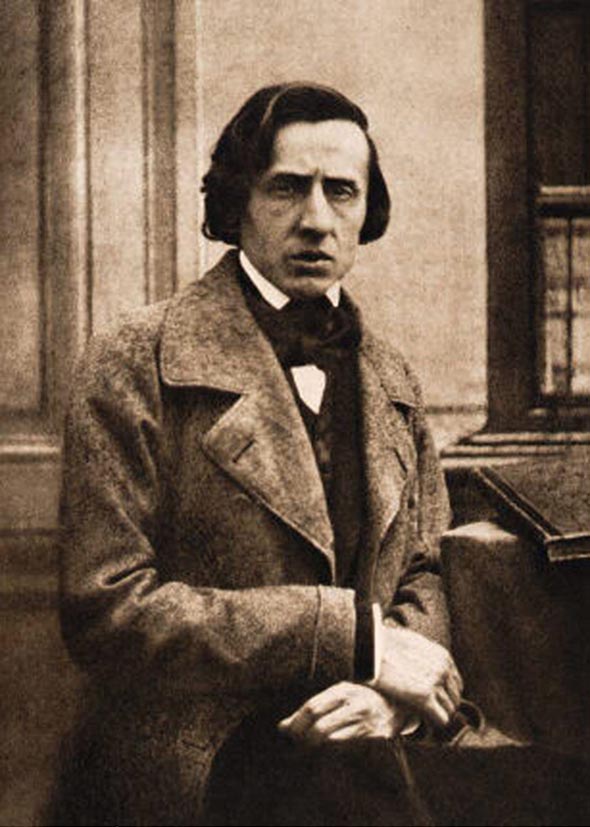 |
|
 |
|
Maurice Ravel
French (1875-1937)
Ravel was a French pianist
and composer. He and Debussy invented
impressionist music. Click the picture to
listen. |
|
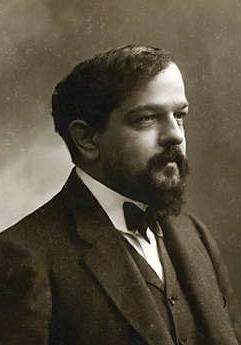 |
|
Claude Debussy
French (1862-1918)
Debussy was a pianist and
composer. He, and Maurice Ravel, created
impressionist music. Click the picture to
listen. |
|
|
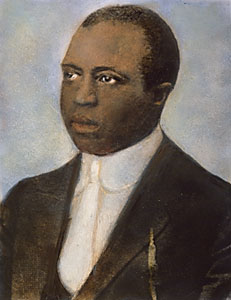 |
|
Scott
Joplin
American
(1867–1917)
Inventor of ragtime music.
|
|
|
|
ELEMENTS
OF MUSIC
|
NOTES
4 ways sound affects us
TAKE A MASTER
CLASS WITH JAMES CONLON:
James Conlon on Music, Plato, and
Aristotle (1)
James Conlon on
Tradition / Innovation (6)
FORMS OF MUSIC:
(p 120)
A CAPELLA:
A cappella
is unaccompanied vocal music. It can be sung solo, or
it can be sung in a group.
Leann Rimes -
Amazing Grace
MASS:
A choral (Vocal) work with 6
parts. Each part relates to a section of a church mass: I
Kyrie, II Gloria, III Credo, IV Sanctus, V Benedictus, and
VI Agnus Dei.
Mozart's Great Mass in C Minor- Kyrie
Antonio Vivaldi
- Gloria Rv 589 "Et in terra pax"
CANTATA:
A
Cantata is baroque music.
It's usually a choral
work - with one or more soloists
and instrumental ensemble. It has
several movements, and served as a mass. See P 120
Halo
3: Cantata #147 by J. S. Bach
ORATORIO:
Large baroque work with
chorus, symphony, and vocal soloists.
John Debney - The Passion Of the
Christ Oratorio
TOCCATA:
The toccata emphasizes the dexterity of a virtuoso
performer. It's fast and lightly fingered.
Toccata & Fugue in d minor
by Johann Sebastian Bach
FUGUE:
A
fugue starts
with a single melody - the main theme. Then the theme is
woven throughout different overlapping melodic lines; this
is called polyphony and counterpoint - a type of texture.
Polyphonic also refers to instruments that can
play more than one note at a time. Monophonic refers to
instruments that can only play one note at a time. The Minimoog and ARP 2600 were both monophonic analog
electronic instruments - see above. Monophony also refers to a
single melody without accompaniment. This is also a type of
texture. See elements of music.
Homophonic texture occurs when chords (harmony) accompany a
single melody.
J. S. Bach's The Art of Fugue - Glenn
Gould
Bach Fugue BWV 891
- Glenn Gould
SONATA:
The sonata form has three sections. The exposition is where themes
and ideas are introduced. The development section develops these
ideas, and the recapitulation restates the exposition, and
minor changes are made.
Horowitz - Scarlatti Sonata L33
Martha Argerich - Scarlatti, Sonata k.
141
Ludwig Van Beethoven
- Moonlight Sonata - André Watts
SYMPHONY:
A 30-minute orchestral work. Open
ing movement is in the
sonata form. See Sonata above.
Toscanini - Beethoven Symphony No. 9
Igor Stravinsky -
The Rite of Spring
The Rite of Spring (1912) is
a ballet with music by the Russian composer Igor Stravinsky.
It's about a pagan ritual where a girl dances herself to death.
The music is one of the most innovative and influential in
history because it was the first to use dissonance.
Leonard Bernstein said, “... it’s never been topped for
sophisticated handling of primitive rhythms…”, and “… it’s
also got the best dissonances anyone ever thought up." For
these reasons it caused a riot at
its 1913 Paris premier.
Radiolab:
What is music? How does it work?
Musical Language
Hear EMI's compositions
Pop
Music
Why do some songs mercilessly stick in
our heads?
CONCERTO:
A concerto features an instrument soloist - with an orchestra . There
are three movements: fast,
slow, and fast. It lasts for about 30 minutes.
Vladimir Horowitz
plays
Rachmaninoff's
Piano Concerto #3
Part 1
|
Part 2
|
Part 3
ETUDE:
An
etude is a musical composition of
technical difficulty. The purpose of an etude is to perfect
some technical skill at the instrument.
Valentina Lisitsa plays Rachmaninoff
Etude Op. 39 No. 6
(Little Red Riding Hood)
Nobuyuki Tsujii plays Chopin
Etudes
Andre Watts plays Chopin Etude op.25
no.1 & "Revolutionary" Etude
Andrei Gavrilov plays Chopin Etude B
minor, op 25 No 10.
NOCTURNE:
A
nocturne is music that is to be played at night, or the
music is reminiscent of nighttime.
Chopin Nocturne in C Minor by
Valentina Igoshina
Martina Filjak plays Scriabin Nocturne
for left hand, Op 9 No2
ELECTRONIC MUSIC:
Musique Concrète:
Musique Concrète
(French for real music) began in the late 1940s with Pierre
Schaeffer. This is the beginning of electronic music. It uses
manipulated recordings.
Delia Derbyshire |
Dr Who Theme
|
Documentary
Click the picture
below, and to try
it:
|
 |
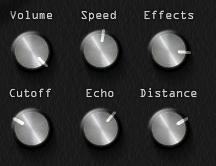 |
|
SYNTHESIZERS
|
|

Arturia -
Moog Modular V
|
|

 |
MINIMOOG
|
|
ARP
2600 |
|
Jean
Michel Jarre -
Oxygene
Tangerine Dream
|
|
Virtual Instruments:
A virtual instrument, also known as a softsynth or software synthesizer,
is a computer program for digital audio generation. Computer software
which can create sounds or music is not new, but advances in processing
speed are allowing softsynths to accomplish the same tasks as dedicated
hardware. Softsynths can be cheaper and more portable than dedicated
hardware, and easier to interface with other music software such as
sequencers and recording studios.
The great analog synthesizers of the past have been converted into
powerful software - virtual music instruments. They have the same
flexibility, sound, and controls as the original synthesizers. Learn
more at:
www.arturia.com
The Minimoog:
The Minimoog is a monophonic analog synthesizer - invented by Bill Hemsath and
Robert Moog. It was released in 1971 by the original Moog Music, and it was
among the first widely available, portable, and relatively affordable
synthesizers. It is often referred to as the Stradivarius or analog synthesizers
because it has a unique fat warm sound. To this day nobody know the secret of
its sound.
The PlayStation:
You create music using
your PlayStation - or other game system. Software to use is
the MTV Music Station. It turns your PlayStation into an
amazing 24 track recording studio. You can purchase the
software used for $5 - $10.00.
Nintendo DS:
You can also create amazing music
using your Nintendo DS
Live performance (Electroplankton
+ KORG DS-10)
|
FLAMENCO:
Paco de Lucia -
Entre dos aguas
Jason McGuire -
El Rubio
Barcelona
FUSION JAZZ:
Jean-Luc
Ponty -
Mirage
|
Cosmic Messenger
Jean-Luc Ponty violin, Allan Zavod keyboards, Jamie
Glaser guitar, Rayford Griffin drums, Keith Jones on bass
KLAZZ Brothers amp Cuba Percussion
Summertime
FREE JAZZ:
MILES DAVES:
Miles Davis Story
|
Bitches Brew
| Coltrane -
So What
BEN
NEILL
Outlands
|
Vimeo
|
http://www.benneill.com
ELEMENTS
OF MUSIC
(P121)
Elements of
Music Presentation
PITCH
–
Pitch,
or tone, is
measured in
vibrations per second. Low pitches are slow frequencies, and
they require larger instruments. Keyboard picture
p122.
Blue Man Group
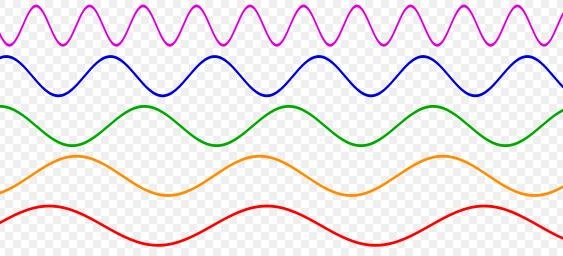
From the bottom lowest pitch / frequency to the highest top
pitch.
Synesthesia
is a neurological condition. The
stimulation of one sense
perception leads to an involuntary
experience in a second sense
perception. People who
have synesthesia might see
sounds, letters, and numbers as
having specific colors. Even
days of the week can be
associated with color as in
Mondays are blue.
SYNESTHESIA
0
1
2
3
4
5
6
7
8
9

Scriabin's Keyboard
Induced
Synesthesia
Castrato
is a male singer with an
unusually high voice. The high
register was produced by
castration before the age of
puberty. Some castrati are the
natural result of not
reaching sexual maturity.
DYNAMICS & VOLUME
The size of sound waves determine the volume.
TIMBRE /
COLOR –
|
|
|
Timbre is what
distinguishes one sound from another. You know your
friend's voice because it has a distinct timbre.
Each instrument has its own distinct sound.
The picture to the right demonstrates the
oscillation of a spring. Each type of wave form has
a unique timbre.
REACT TABLE
|
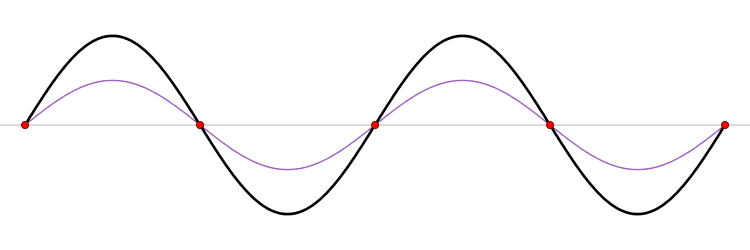 |
|
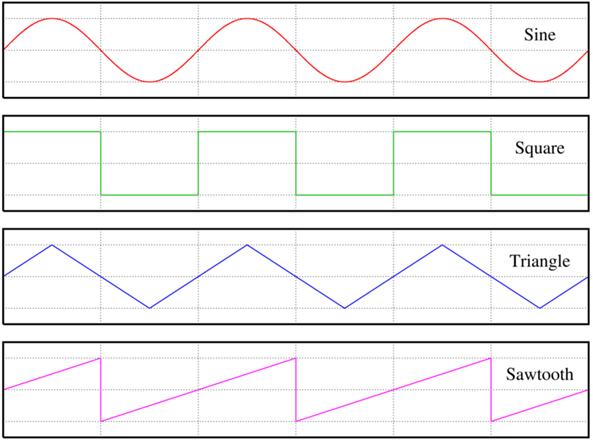 |
|
The picture below shows what the different sound
waves look like. They are:
sine,
pulse,
triangle,
and
saw-tooth.
Each has a unique timbre. By mixing them together,
synthesizers can create complex warm sounding
timbres.
oScope for iPhone
Oscilloscope - Bach prelude
|
|
Examples:
Listen to these performances of Dominic Miller and Pat
Metheny -
Shape of My Heart.
Each guitar has a different timbre.
Listen to these performances
of Goodbye Pork Pie Hat by Chares Mingus. Each solo
instrument has a different timbre - or sound quality.
Jeff
Beck -
Goodbye Pork Pie Hat
Jonas
Hellborg and John McLaughlin -
Goodbye Pork Pie Hat
Antonis Andreou,
Trombone
Dave Holland -
Good By Porkpie Hat
|
d. Duration
–
Length of notes or silences.
See chart p124.
John Cage -
4'33"
John
Cage -
About Silence
RHYTHM:
a. BEAT
-
b. METER
– Cluster of beats with
accents.
- Double Meter
– 2 beats to measure:
12 12
12
- Triple Meter
– 3 beats to measure:
12 3 12
3 12 3
- Quadruple Meter
- 4 beats to measure: 12
3 4 12 3 4
or weaker second accent
- Syncopation
–
Accent on unusual beats.
(See p 124-145)
c. TEMPO
- Speed.
♪
= 60 means 60 quarter notes per minute. See chart p125
allegro etc.
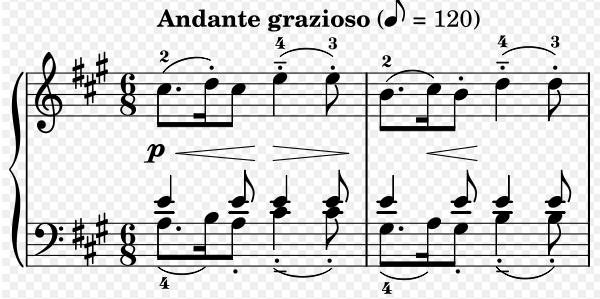
The first two measures of
Mozart's Sonata K. 331 indicates that the tempo is
Andante grazioso. The modern metronome marking is
"♪
= 120".
MELODY - Melody is the part of music you sing. It's a succession of notes. In conjunct melodies the notes are close together. Disjunct melodies have notes that are 2 or more steps apart.
Example:
Mozart Variations in C, K.265 (300e) played by Steven
Lubin. Played on a piano forte.
Mozart's music can sound like ragtime because Scott Joplin
was inspired by his music. Listen:
HARMONY –
2 or more simultaneous notes.
2 is an interval. 3 or
more is a chord. Consonant intervals, or chords, are
pleasing sounding while dissonant sounds are not pleasing.
TEXTURE &
SONORITY –
Large intervals are an open or thin texture. Smaller
intervals are a closed, tight, or thick texture.
a. Monophony
is a single line. There can be
many of the same notes.
This is not to be confused with monophonic
instruments.
b. Polyphony
is two or more melodies
(counterpoint).
This is
not to be confused with polyphonic
instruments.
c.
Homophonic
occurs when chords accompany one
melody.
TONALITY -
The
C Major Scale
consists of all white keys from C to C.
The A
Minor Scale consists of all white keys from A to A. (See
slides.)
Equal Temperament and the Well Tempered Clavier by Bach
Pentatonic Scale -
A
pentatonic scale uses five notes per octave. Penta is
Greek for five. Playing only the black notes of a keyboard
is a pentatonic scale. A pentatonic scale starting on C is:
C, D, E, G, A. The notes always sound good when played
together.
OTHER
IMPORTANT CONCEPTS
CONTRAST:
JS
Bach -
2 Part Invention #8 in F Major
Andrea Bocelli was the first
to perform
Con te Partiro.
The music was
written by Francesco Sartori, and the lyrics are by Lucio
Quarantotto.
Nessun
Dorma
"O
Sole Mio" The Three Tenors: The Spanish Tenor
Plácido Domingo, the Spanish / Mexican Tenor José Carreras,
and the Italian Tenor Luciano Pavarotti.
GRAND
OPERA (serious, tragic, and heroic):
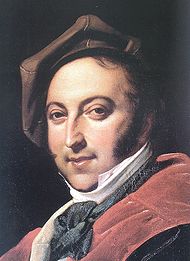
Rossini - Wilhelm Tell
Guillaume Tell (Wilhelm Tell) by Gioachino Rossini is an
example of grand opera. It was Rossini last opera although
he lived forty years longer. The work glorifies revolution
and civil disobedience. For this reason it was censored in
Italy. Performances have been given in both French and
Italian.
OPERA
COMIQUE:
Opéra
comique is a French genre of opera. It contains spoken
dialogue, and recitatives (Sung Dialogue). It is, despite
its name, not necessarily comic or light in nature. Bizet's
Carmen,
likely the most famous opéra comique, is a tragedy. It's
sometimes confused with the Italian opera buffa (opéra
bouffon). Carmen started as opera comique, and was later
made into grand opera.
CARMEN:
Maria Ewing plays
Carmen, and Barry
McCauley is Don Jose. The London
Philharmonic is conducted by
Bernard Haitink.
Characters:
Carmen: she works at a cigarette factory. Controversy: first
time a woman was portrayed smoking. She has no morals.
Don Jose: A soldier, falls in love with Carmen, and goes
awal (Absent Without Authorized Leave). In the end he kills
her at the bull ring.
Escomillo: A brave heroic bullfighter. Carmen leaves Don Jose for him.
Oedipus Rex at Sito Kinen Festival in Matsumoto (1992 by
Igor Stravinsky).

Julie Taymor (1952 - ) is an American director, actor, set
designer, costume designer, and puppeteer. She has two Tony
Awards, the Drama Desk Award for Outstanding Costume Design,
an Emmy Award, and an Academy Award nomination for Original
Song.
OPERA
BUFFA (comical):
Rossini's
Barber of Seville
Final scene of Don Giovanni from Amadeus
Mozart
entered the work into his catalogue as an "opera
buffa" although the opera blends comedy, melodrama, and
supernatural elements. Dramma giocoso is a term that denotes
a mixing of serious and comic action.
Movie
Amadeus -
Scene Die Enfuhrung Aus Dem Serail
Shortly after Mozart arrived in Vienna, the emperor
commissioned him to compose the opera: The Abduction From
The Seraglio. The leading soprano was Salieri's mistress
Caterina Cavalieri.
OPERETTA:

Jacques Offenbach (1819–1880)
Offenbach was a composer and cellist of
the Romantic era. He was of the originators of the operetta
form. Operetta is light hearted opera.
ORPHEUS IN THE UNDERWORLD
MUSIC
APPRECIATION
Terry Riley • In C Remixed •
CD Trailer
In C is the
first minimalist musical composition. It inspired the music
of Philip Glass, trance, techno, and scores of others. It was first performed in 1967
by an ensemble from the State University of New York at
Buffalo.
It consists of 53 short numbered musical phrases - that are
played in order, but they are repeated any number of times.
Musician can play any phrase they want. A metronome like
pulse is created by one musician playing repeated octaves of
C. There is no set duration or number of musicians.
Sxip Shirey:
Pandora
|
TED |
Blood of the Blood
|
Bowls with Red Marbles
KEITH JARRETT:
Sun Bear Concerts Piano Solo Tokyo
Encores
Koln Concert
|
Radiance
|
Paris Concert
BOBBY
MCFERRIN:
Improvisation with Richard Bona
Richard Bona - Dina Lam
JILL SCOTT:
A Long Walk
|
Hate On Me
The Fact Is
|
Summertime
Zoe Keating -
The Legions |
Tetrishead
|
Escape Artist
KOMUSO - PRIEST OF
NOTHINGNESS:
Playing Shakuhachi Flute
MIYATA KOHACHIRO:
Honshirabe
(Japanese Shakuhachi Flute with
Kimono patterns)
JOHN MAYER:
Daughters
|
Gravity
|
Belief
CARLOS SANTANA:
Oye Como Va
|
Smooth
Corazón Espinado
|
Woodstock 1969
John Lee Hooker:
The Healer HQ |
Chill Out
ART BLAKEY
Dat Dere
JEFF BECK:
Goodbye Pork Pie Hat
|
Mahavishnu Orchestra:
Lotus Feet Acoustic |
Lotus Feet Electronic
Flamenco Guitar Barcelona
Beatbox
PNiccolo Paganini - Caprice XVI
Performed by Alexander Markov
Niccolo Paganini
- Documentary
RAVEL
- IMPRESSIONISTIC MUSIC
Maurice Ravel (1875 – 1937) was a French composer and
pianist of Impressionist music. Ravel's piano compositions,
such as Jeux d'eau, Miroirs, and Gaspard de la Nuit, demand
considerable virtuosity from the performer.
Raul Midon - State Of Mind @ Jools
Holland
Ornette Coleman
(1930 - ) is an American saxophonist, violinist,
trumpeter, and composer. He was one of the major innovators
of the free jazz movement of the 1960s.
His album Sound Grammar received the 2007 Pulitzer Prize for
music.
ELECTRONIC MUSIC:
Dominic Miller-Adagio in G Minor-Albinoni
Goldberg Variation No. 1 - Adam Fulara
http://www.youtube.com/watch?v=QbZe45eicDE
Adam Fulara-BWV_847
http://www.youtube.com/watch?v=3E0hK8HwhLI
Jaco Pastorius Solo
Air by Bach, Bobby Mcferrin
Bobby McFerrin vocal with Ferenc Snétberger
guitar
Allan Holdsworth
Joe Satriani Live -
Flying In A Blue Dream
